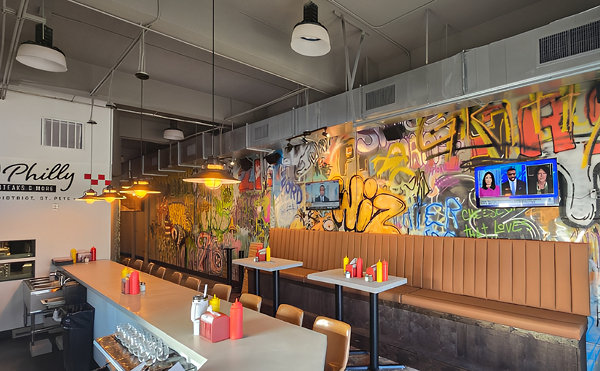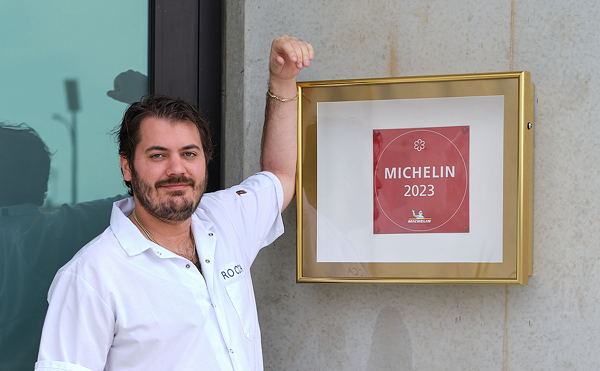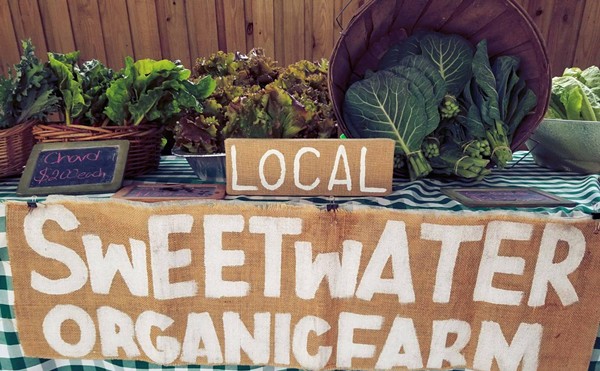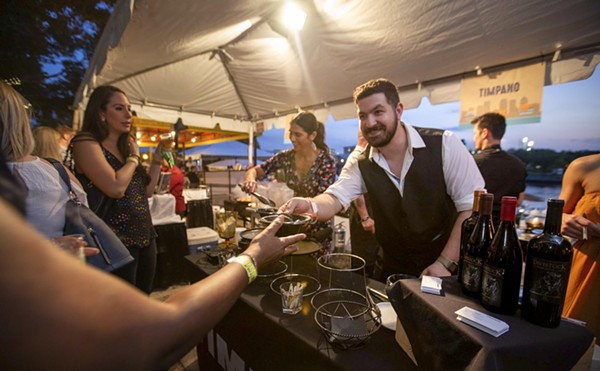
Let’s talk about opening Champagne. Unless you are a professional athlete who just won a championship, your goal is “first do no harm.” The winemaker worked very hard to create pinpoint carbonation in the bottle you are holding, and a bubble is a terrible thing to waste. It’s actually quite easy if you just learn a few tips; master the ritual to impress (rather than blind) your friends.
Since you want to drink your Champagne very cold anyway, several hours in the fridge makes the cork less likely to go rogue. First remove the foil capsule; most have a tab you can pull to make this easier. Remember that a Champagne cork is under immense pressure (90 pounds per square inch — about three times that of your car’s tires). Hold the bottle at a 45-degree angle away from your eyes and place your thumb on the cage and metal cap on top of the cork. Pull down the wire “key” and loosen the cage by turning the wire six counterclockwise half turns; this is universal, and if you remember it you’ll never go wrong.
I also like to place a kitchen towel or large cloth napkin over the cork at this point. When the cage is loose, keep the cork pointed away from the crowd and grip it firmly with your thumb and forefinger through the towel and (here’s the secret) turn the… bottle. By holding tight to the cork and turning the bottle you can gently ease the cork out so that you don’t lose any of the precious bubbles. Unlike what you may have seen in the movies, Champagne corks are not supposed to pop. Your goal is just a tender whisper as the cork is released. Then all the bubbles that you pay for with your hard-earned cash wind up in the glass instead of all over the room.
Speaking of glasses, you want to serve sparkling wine in narrow flutes to preserve your bubbles. The broad old-style “coupe” (that legend holds was modeled from the breast of Marie Antoinette) may evoke elegant images of Fred and Ginger movies, but the shape lets the bubbles dissipate too quickly. Stick to flutes and you and your guests will be happy to the last drop. One great thing about sparkling wine is that you can often find 187ml “splits” (or ¼ size bottles) so you can always have bubbles at hand for a couple or a crowd.
Another area that deserves attention is how to keep leftover wines tasting fresh. Just putting a regular cork back in doesn’t remove the oxygen that’s been able to creep into the bottle. To begin with, put the bottle in the fridge to help retain flavor. Even red wines should be refrigerated for storage once they’re opened. I’ve been using the “vacu-vin” system for years, using rubber corks with a separate small hand pump that enables you to remove air and keep your wine fresh. On a recent European tasting jaunt, however, I discovered the Franmara all-in-one vacuum pump and stopper at a winery in Chianti. These are available on the web for less than $4 a pop, but because of the shipping I bought a bunch to share with friends. Depending on how many you project for personal use, you may wish to do the same.
I know some folks who practice “downsizing” into empty plastic water or soda bottles. They stock many sizes so that there is little space between the screwtop and the leftover wine. I’d rather pump. Remember, once the wine is open, oxygen in the bottle becomes your enemy and the fridge is your friend. Refrigerated still wines will stay fresh for a few days but many fall off quite a bit the next day — you’ll just have to take your chances. If you don’t drink a lot of wine and you find that your wine is not lasting, you might consult your wine shop for half bottles (375 ml), which are usually perfect for a small dinner. In any case, attention to a few details will enhance your wine-drinking experience.
Next month: Exploring more grapes.

















